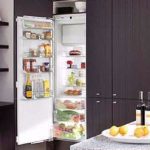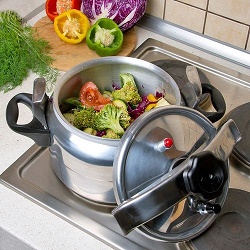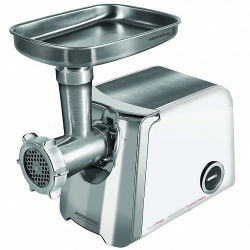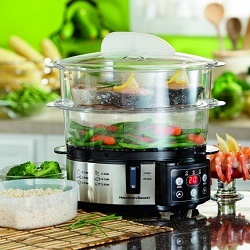Why many foods should be stored in the refrigerator
Since childhood, modern people know how to store food, but few people think about why food is stored in the refrigerator, whether it is a simple tradition. It can be briefly explained that this is a security requirement, but such a response carries little information. For detailed explanations should refer to some sections of chemistry and biology.
Food left in the heat and light is oxidized by oxygen and decomposed under the influence of sunlight, it is influenced by excessive air humidity, and other chemical and biological effects are factors affecting products from the negative side.

Content
Who or what spoils the products?
For the burden of everyday life, many people forget about microorganisms, which are one of the main causes of food spoilage.Fungi, bacteria and yeast get into food from the environment and, finding a basis for nutrition and reproduction, begin to process it, making it dangerous for human consumption. Putrid microorganisms develop well with the access of oxygen, high humidity and temperature. The range of vital activity of bacteria lies in the interval from +10 to + 55 ° C.
When ingested, they cause the breakdown of proteins, and decomposition products appear and accumulate, which not only smell bad, but can also be poisonous. In food, biochemical processes constantly occur, leading not only to a change in its color, but also to the destruction of carbohydrates and proteins, and the rancidity of fats. It can slow down low temperatures, slowing down the metabolism of microorganisms and their growth in food, so food is stored in the refrigerator.

Is the refrigerator capable of wonders
A home refrigerator is a place in which it is dry, dark and cool, and the temperature is ideally maintained at about + 5 ° C. It is the cooling of food to a temperature slightly above 0 ° C that guarantees the storage of perishable products for the shelf life of each product.At lower temperatures, oxidation and decomposition reactions go much slower.
Often occurring E. coli and Salmonella cease to multiply if it becomes cold enough and the temperature drops below + 5 ° C, and Listeria ceases activity when the temperature is below + 4 ° C. But we should not assume that food in a cool place will stand for weeks. The same soup will spoil in about 7 days (which is, of course, longer than if it was stored at room temperature).
Some mucus-forming bacteria develop well on the surface of meat, even at a temperature slightly above 0 ° C, and mold fungi can also develop at sub-zero temperatures, manifesting themselves even with prolonged storage of meat in the freezer.
Some food enzymes and microorganisms contained in products continue their activity even in coolness, and their activity is determined not only by the ambient temperature, but also by humidity - the more the product contains moisture, the more active the processes and the less stored the product. Freezing, which transforms water into a solid state, significantly slows down fermentation and other processes in food, but does not stop them completely.

It is believed that if you put the food in the freezer, then you can store them forever, because the vital activity of microorganisms stops and with this stops the deterioration of food, however, for example, the process of decomposition of proteins continues at negative temperatures, but goes very slow. That is why products are stored in refrigerators and freezers for no longer than the prescribed dates.
Especially favorable environment for the development of bacteria are meat and dairy dishes. If raw meat is allowed to be placed in the refrigerator for up to 1 day, the stuffing cannot be stored for longer than 12 hours, because its surface area is an order of magnitude greater than the surface area of a piece of meat, and much more bacteria are placed on it, therefore it deteriorates faster.
In order to have only fresh products in the house, it is necessary to reduce their stay in heat to a minimum, and place them in a suitable package in the refrigerator, observing storage periods and temperature conditions.
How much and how to store food in the refrigerator
It is impossible to unequivocally name the best temperature suitable for storing any food - the degree of its cooling for safety depends on the structure and the percentage of water in it.If the food was fresh before cooling, the following periods of its storage in the refrigerator are assumed:
- raw fish and meat, open canned fish - 1 day;
- sausage, thermally treated fish - 2 days;
- heat-treated meat, raw duck and goose - 3 days;
- soft cheese, sour cream, cooked duck or goose - 4 days;
- raw eggs, hard cheese, butter in the package - 1 week.

To keep food well, the refrigerator is operated in accordance with the recommendations of the manufacturer, placing away from heat sources. If it is indoors + 35 ° C, then inside the refrigerator it is unlikely that it will be possible to maintain the temperature below + 8 ° C. There are several temperature zones in the refrigerator. Closest to the source of cold are meat products, then, in the direction of increasing temperature, dairy products, dairy products, vegetables, fruits are laid out, all of which are packaged so as not to absorb odors from each other. The refrigerator should not be filled to capacity, leaving gaps for free circulation of cold air.
Chemical kinetics gives the following explanation: the colder the medium, the slower the chemical reactions proceed.Whatever the other conditions, the “chilled” microbe is not capable of spoiling anything quickly. Although chemical reactions do not stop at all because of the instability of the food components themselves (for example, proteins), but a strong cooling, which can even slow them down until it freezes. That is why foods are stored in the refrigerator much better than at normal temperatures in a residential area.

/rating_off.png)












